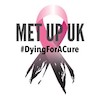How much is a year of life worth?
Everyone’s life has a price on it but, for most healthy people, this is not something that occupies their waking thoughts. A lot of people need healthcare, and in taxpayer funded healthcare systems such as the NHS, this is something that everyone has a stake in. We all know that the NHS is creaking, with over 7.5 million people waiting for routine treatments. Almost every area of the NHS is missing targets, hospitals are crumbling, the workforce feels undervalued and underpaid, and, at the hard end of all of this, are the patients.
Provision of healthcare costs money and NICE is the organisation tasked with ensuring that interventions provide value in England (and Wales and Northern Ireland usually follow NICE too). Scotland has a separate organisation, the SMC, which has a similar role to NICE. NICE uses the QALY (quality adjusted life year) to measure and compare cost effectiveness of treatments. One QALY is equivalent to one year in perfect health and is a measure which encompasses both length of life and quality of life.
Back in 2014, the BBC published an article on their website How much is a year of life worth?
In this article, the author Chris Cook, explained:
“NICE aims to spend less than £20,000 to £30,000 per QALY. That is not a hard limit; it will go almost twice as high for end-of-life drugs [up to £50,000 per QALY gained]. NICE accepts that, at the very end, a small amount of extra time can seem to be worth a lot more to patients and families.” Chris goes on to explain that this level has been fixed since 1999 when NICE was established. Therefore, between 1999 and 2014, the willingness to pay had fallen in real terms because it had not kept up with inflation.
Ten years has passed since this article was written, so now is a good time to revisit it. In 2024, NICE still aims to spend less than £20,000 to £30,000 per QALY gained. This is the exact same amount fixed 25 years ago, a huge fall in real terms, taking inflation into account. A new voluntary pricing agreement with the pharma industry has recently been signed, freezing this amount until 2029. That will be a whopping 30 years of the same price structure for higher cost drugs being used by NICE.
There has been one significant change since 2014. NICE reviewed their methods and processes in 2022. As part of this review, they removed the additional funding available for end-of-life treatments. This is based on the assertion: “There is no evidence that society values treatments at the end of life over other treatments. Evidence does show that society values health gains from treatments for very severe diseases over other treatments.”
Instead, NICE introduced a new way of providing additional funding for a wider range of severe diseases, the severity modifier. This has two different categories to allow higher cost drugs – medium severity goes up to £36,000 per QALY gained and high severity goes up to £50,000 per QALY gained.
The severity modifier was welcomed by the pharma industry. There are a lot of severe diseases that cause real suffering and many of the newest treatments are high cost. Most people assumed that metastatic breast cancer (MBC) would qualify for the highest severity because it is a severe disease AND has low life a life expectancy. Particularly so for treatments used later in the course of the disease, where life expectancy is less than two years.
Unfortunately, under the new methods, all MBC drugs have been assigned a medium severity. The impact of this is shown clearly in the recent rejection of Enhertu by NICE for HER2-low MBC. In fact, Enhertu has been accepted for reimbursement in 17 countries for HER2-low MBC. Scotland kept additional funding for end-of-life diseases and Enhertu has been accepted there for HER2-low MBC. We are not allowed to know what discounts have been offered, but we know the SMC will have negotiated to get a good deal in Scotland.
At METUPUK, we believe that Chris Cook was correct when he wrote in 2014 that “at the very end, a small amount of extra time can seem to be worth a lot more to patients and families”. The sad truth is that when a drug is used near end-of-life, individual patients rarely take it for long a time, the extra months being so valuable for making more memories together.
Returning to the original question, “How much is year of life worth?”, I don’t know the answer to this, but as a metastatic breast cancer patient, I do know my life is worth a lot less than it was in 2014.
With new treatments being developed all the time, the issues in this blog are of paramount importance to people with many types of metastatic cancer, struggling with the cost of living.

